
Subject Areas: Environmental Sciences
1. Introduction
The biological concept of evolution is a most powerful scientific tool, well supported both empirically and theoretically. One has to look at the global warming process in an evolutionary perspective. This would allow one to see the flaws in the two dominant positions in the climate change debate, namely corncopianism on one hand and precautionism on the other hand. Evolution is slow and climate change fits this notion. In this paper I will look at development during the last two decades, when global warming has begun to be felt everywhere. First, I explore the evolutionary perspective upon climate change and relate the global warming process to the concept of evolution. Second, I will present a few diagrams about GHG in a few countries where the GDP constitutes the benchmark for reasons that will be spelled out below.
2. Evolution of Social Systems
Although evolution has been theorised in the social sciences, especially economics and game theory [1] , it has not become a major approach or framework of analysis. It does not fit into the focus upon the actor and his/her choice of ends and means, with the Weberian tradition, or with the socilogical emphasis upon the social context of groups, with Durkheim’s following. Evolution is a macro set of phenomena that encompasses not only intended behaviour or group attitudes but also unintended outcomes, even unrecognized ones by the involved parties, actors or groups, like economic outcomes [1] .
Development is not evolution, because its time span is much shorter and the process is typically modelle as partly intended by alt least some actors or groups. Thus, one speaks of the rural development in India after Independence or the economic devlopment of China since 1980, but it would not be suitable conceptually to mention these events as evolution. For historians, the time perspectice is usually much more narrow than what evolaution implies. For example, the victory at Pharsalos has been named a critical event for the establishment of Roman dictatorship, but it was hardly an evolution towards something like the fall of the Roman civilisation.
Evolution is a conept that covers centuries of developments and has a direction, which separates it from chaos or circular change. Evolution has a starting-point in time as well as adeterminate end state. It is macroscopic and summerizes the result of many different events in an outcome that is intended by no one and often unreg- cognized until discovered by a scholars. In bilogy, one encounters many kinds of evolutions: life, species, homo sapiens, etc. Can one speak of the evolution of social systems?
A few examples come to mind when it is talk about evolution as scientific notion and not a religious one:
-Marx’s predictions about the evolution from an agrarian society to a socialist one over capitalis;
-Kant’s idea of the end-point of mankind in rule of law, both domestically and internationally;
-Jarred’s interpretation of human history from a hunter-gathering stage to civilisation as driven by innovations in food production basically;
-One can also mention theories about the evolution of central human institutions like the market and the state as well as moral consciousness in the sense of integrity, solidarity and fairness.
As a matter of fact, theories of evolution of social systems received a stong set of stimuli from evolutionary game theory, with the evolution of cooperation, and CPRs as well as of altruism [2] . Evolutinary game theory searches for the development towards an ESS―a pure or mixed evolutionary stable state, often in an abstract manner. Here, I dare propose―tentatively for certain―that the ongoing global warming process amounts to an evolution.
3. Arrhenius’ Thesis
In the literature on climate change, the discovery of the global warming mechanism is attributed to Swedish chemist Arrhenius, who wrote the paper “On the influence of carnbon acid in the air upon the temperature of the ground” in 1896, about air pollution the one hand and rising average temperature on the other hand. He clearly predicted that global warming would come about due to the emission of “carboncide” pollution. Perhaps he also overstated the effect, as the rise is slower than he projected, although still very dangerous.
One may employ the Arrhenius’ thesis for an evolutionary theory about mankind on Planet Earth with the following stages:
1) From homo habilis to homo sapiens;
2) From hunter-gatherers to the agricultural stage;
3) From agraria to industria;
4) From the industrial soiety to the post-industrial stage with climate change, originating with Arrhenius’ air pollution from energy consumption industries and urban life.
The 21st century will be the time period of ecology! Environmental degradation is to be found almost everywhere [3] - [6] . Climate change is only one form, but perhaps the most dangerous for mankind and other living species.
Now, we focus here upon the last stage, wher massivee energy consumption and population growth is leading to accelerating GHG emissions―see Diagram 1 for the global picture.
The increase in GHG emissions has been almost “furious” during the last decade, signalling the transition to another stage in the evolution of mankind, namely the climate change period. How it will end no one knows, but it is an irreversible change, affecting all kinds of social systems. Moreover, the fundamental problematic of this new evolutionary stage for mankind is not economic growth and urban expansion but the protection of the environment in all its shades. And this positists a basic dilemma, viz. How to reconcile the ever ongoing search for economic develpment and expansion on the one hand and the protection of ecological values?
Diagram 1 shows the irresistable force of economic development, GDP expanding strongly over the last decade, constituting a Juggernaut force. Can mankind find the means of economic growth that are neutral to ecological integrity or sustainability? And if so, will they be employed? In Diagram 1, we see well the sharp rise in years emissions of green house gazes since 1990, amounting to some 50 trillion kilos. On average, for 2012 each inhabitant of the planet Earth emits according to the following equation: GHG emissions = 8300*population; R2 = 0.87. The life style of global people as measured by the GDP is a major contributor to the increase in emissions: GHG emissions = 0.58*GDP; R2 = 0.53. Thus, the more people and the higher energy consumption they need for their improving life style, the more GHG emissions of all six kinds. As the consum- ption of renergy sis predicted to continue upwards in the decades to come allowing for economic development, especially the catch-up of poor nations, one must ask where global warming will stabilize: at 2C, 4C or 6C, which would have enormous impact on the societies on Earth.
4. No Negative Feedbacks, Only Positive Feedbacks?
There is no hope that mankind can get out of the new predicament of climate change, as the relevant question is how much the Planet will heat up: 2C, 4C or 6C or even more. Global warming has numerous negative effects upon several systems, natural and social, for instance:
-rapidly heating oceans with increased acidification;
-expanding deserts and growing water shortages as well as draughts;
-unpredictable weather with El Nino, typhoons and tornados;
-ecological refugees from landmasses overtaken by oceans;
-sea level rise with unpredicatble consequences for urban sites and the economy;
Together with an expansing global population that may go as high as 9 - 10 billions, climate change will affects:
-global bio-systems of several types like endengered species, etc.;
-resource scarcity;
-poverty levels;
-conflicts among nations.
Can climate change be halted or the increases in GHG emissions be levelled off? There really is not natural negatie feedback loop with changes that could cancel out the heating up process. In stead, there are several positive feedbacks combing climate change with environmental pressures to threaten a global ecological disaster with unforseable consequences for mankind. What is now debated is the initiatives of governments to halt the

Diagram 1. GHG emissions, population and GDP 1990. Sources: See below.
increases in GHG emissions by global coordination upon a climate policy. What is involved or better hoped for can be seen from a few examples with different country development.
5. “Halting” GHG Emissions
There is much talk about “halting” te expansion of GHG. It is even stated that mankind has months or a few years to accomplsi this in order to save itself from ecological disaster. In the back looms the so-called Gaia hypothesis that entails that fundamental changes in the biospehere will be accompanied by the extinction of our species―see Lovelock [7] . Yet, others claims that the goal of 2c oe 4C is achievable if we now halt the growth in GHG. What more exactly is involved in the idea of halting GHG?
One needs to distinguish between several aspects of the halting of the pollution of the atmosphere:
-Absolute or relative changes, levelling off or real reductions;
-Desirabiity: does ecological dustainability trump economic development for all countries?
-Feasability: Can it really be done, realistically speaking?
-Suffciency: Is halting enough for 2C, 4C or 6C?
-Energy projections.
When we analyse these questions below, we turn to use the LN of both GHG and GDP for every chosen country due to the huge numbers involved.
1) Type of change
When the Chinese government promises to halt its GHG in 2030, then it is a relative change concept it has in mind, i.e. in relaion to its GDP. Since the GDP normally grows every years, this halting does not entail that GHG will diminish. Look at China in Diagram 2.
The Chinese promise that from 2030 the proportion of GHG to the GDP would start decreasing does not entail that total GHG would begin declining. As GDP needs to grow about 5 - 10 per cent during the coming decades in this country with largest total emission, it may actually be the case that GHG continue to grow―at a slower pace!
Matters are entirely different with regard to real reductions. Can it be done? Yes, lok at the two following Diagram 3 with decreasing trends, for Germany and Sweden.
Despite a nice economic expansion during the recent decades, ermany has indeed managed a GHG cut back. However, its total emissions are still at a very high level and they contribute of course to the yearly total global increases. The problem is simply that when one country decreases GHG, others may increase so that total globally are still up.
In relation to German energy policy, one may perhaps speak of an ecological “beggar thy neighbour” strategy, closing its own nuclear stations but reflecting upon importing energy from France’s nuclear stations. Germany has increased its use of coal, importing from Columbia with environmental dammages there. Look now at Sweden in Diagram 4.
This could constitute a model development to be copied all over the world. Yet, Sweden is at a very high level of GHC per capita, much higher than India even with these reduction in the diagram. Moreover, Sweden is a
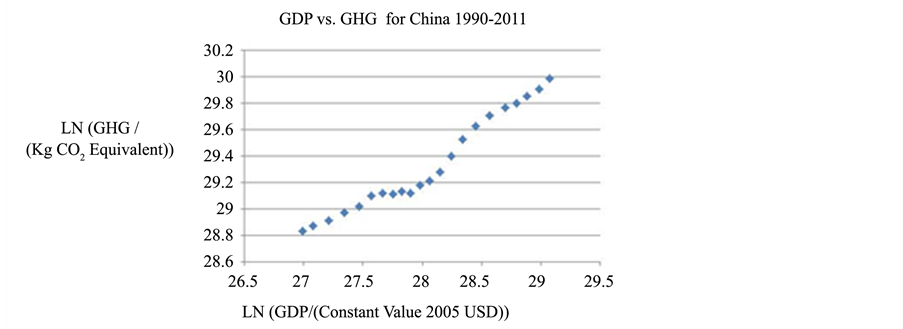
Diagram 2. China: GHG and GDP. Source: See below.
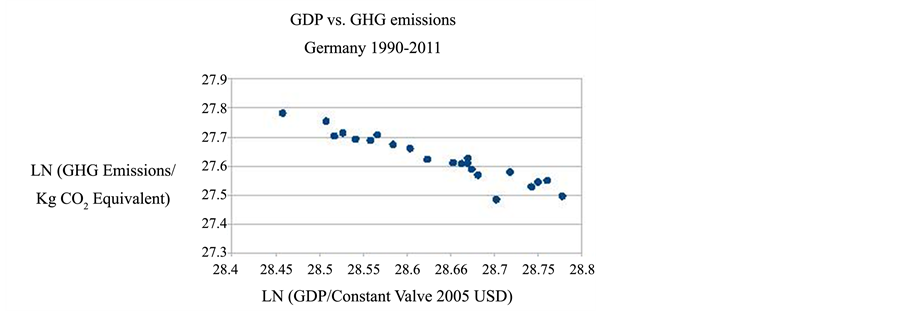
Diagram 3. Germany: GHG and GDP 1990. Source: See below.

Diagram 4. Sweden; GHG and GDP 1990.
small country by population, meaning that these reduction matter little for the overall picture for Planet Earth.
2) Desirability
Developing countries have one overarcing priority, namely to catch-up with developed countries. They cab only do so by employing lots of nergy to raise economic output. But energy consumption i a wide sense results necessarily in GHG emissions. So far most developing countries have opted for rapid economic growth, even at the expense of environmental resources. Thus, we expect to find growth processe in the diagrams below for GHG. First we look at a dynamic developing country that is finally “takinf off”, namely giant Indonesia (Diagram 5).
One observes a clear upward trend for GHC emissions, reflecting the economic growth rates. Given its huge population, this country is a major polluter. Consider then Pakistan (Diagram 6).
The trend is the same for this huge country; GHC emissions up sharply together with economic develop- ment.
Turning to the African continent, we may expect a rapid progression of GHC emissions, as the population grows fast and the search for a Western life style is strong. Diagram 7 gives a picture of the situation for the largest nation, Nigeria.
Oil producing countries tend to have huge GHC emissions, as for instance the Gulf states. Nigeria fits the picture well, and this countr reminds of the fact that after GHC emissions level out they may actually start increasing again. Actually, the same trend is to be found in the most advanced nation in Africa, with Diagram 8 showing South Africa.
South Africa burns a lot of coal in its electricity production, which accounts partially for the straight upward trend in Diagram 8. It also constitutes a developing economy attempting to catch-up with regard to its black majority.
3) Feasibility
It is true that many innovations have been made that reduce the GHG emissions. But this fact bypasses

Diagram 5. Indonesia.
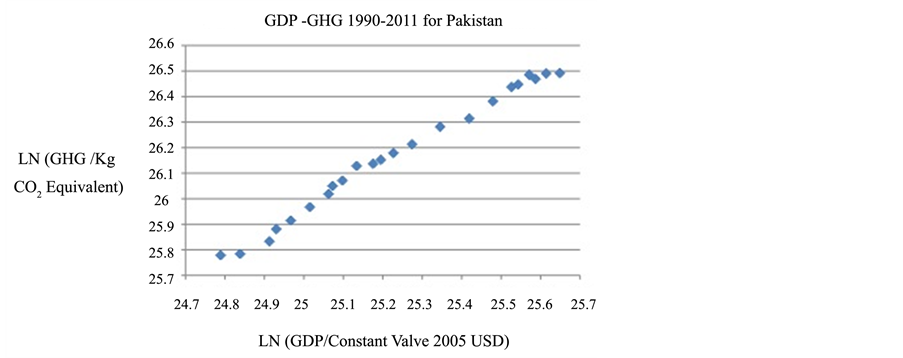
Diagram 6. Pakistan.
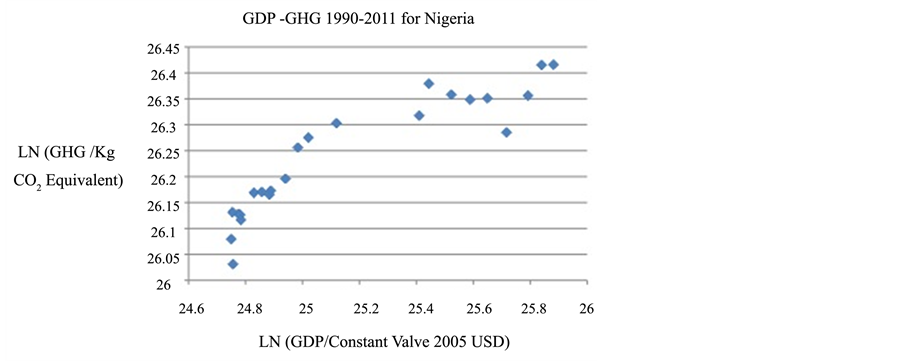
Diagram 7. Nigeria.
entirely that at the same time new forms of energy consumption are being employed by ever more people. The latter drive outpaces easily the former. One may observe a fall in GDP emissions in a country but it may not amount to a long-run decline. Actually, emissions may start going up again. Take the example of Russia (Diagram 9). The Russian numbers are somewhat erratic, perhaps due to lack of proper mesurements, but they show that GHC emissions may start going up after a decline. The decrease for Russia reflects the strong de- industrialisation, following the fall of the Soviet Union. Also the other countries from the Soviet period display huge GHC emissions, like e.g. Kazachstan. However, recently Russia has become a large polluter again, like for instance Canada (Diagram 9).
4) Suficiency
Is, then, a halt to the augmentation yearly of GHG emissions enough to reach the key objecives: 2C, 4C or 6C? The answer is: NO. The levelling out of emissions at a high level will not stop global warming, as the accumulated GHC is very large and it does not evaporate, at least not quickly. As long as the emissions of GHC are positive, global warming continues. Can GHC emissions become negative? No, impossible given the energy projections above!
However, it is essential to recognize that global warming is an evolutionary phenomenon that cannot be stopped by mankind or by fiat. It will frame events in the 21st century and no one can predict the exact social and political consequences. Yet, one can develop a strategy towards climate change, based upon ac acceptance of its evolutionary nature. This goes against the two extreme positions in the discussion about climate change.
5) Energy projections
The energy projections for the global economy tell a completely different implications concerning feasibility. Let us look at some of the predictions made for the coming decades below in Diagram 10 with rather standard projections.
In relation to these predictions about the strong augmentation of energy needs in the coming decades of the 21st century ne may of course questions the assumptions behind them. But they still indicate that a growing world population with an unsatiable demand for improvements in life style will put pressure upon energy production. And the portion of renewable energy is hardly set to explode, reducing much the dependence upon fossil fuels.
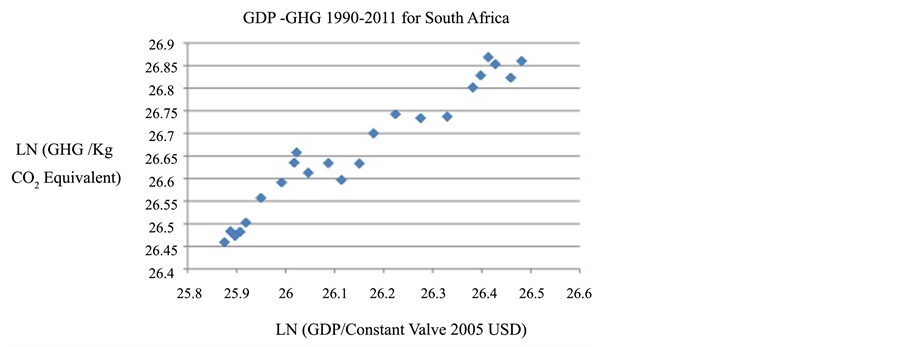
Diagram 8. South Africa.

Diagram 9. Russia: GHG and GDP.

Diagram 10. Energy projections. Source: BP Energy Outlook 2015.
It is argued that economic growth in the future wil be less closely connected with expansion of energy con- sumption, but this remains to be seen. In any case, energy and emissions do go together strongly. It would require a few major technological breakthroughs to undo this close link, allowing for more of energy but less of GHG emissions.
6. The Flaws of Cornucopianism
The position of the cornucopians is either that climate change is not due to human activity or that it is wasteful to take expensive policy measures against it. The first line of argument is connected wth economist Simon [8] and political scientist Wildavsky [9] [10] , rejecting climate change as an abberation or an exaggeration of certain trends that are contingent. Danish Lomborg [11] - [15] represents the second line of criticism against global warming policies, as he claims they are better reeplaced by policy measures against visible evils in the world today.
The conucopian theory (after Greek “horn of plenty”) was developed against the claims of ecologists that the resources of the globe were heading for exhaustion, especially due to the ever growing population pressure. Thus, cornucopians argued that the envitonment generally was NOT threatened by economic development resulting in all kinds of pollution, including food poisoning etc. In stead, the ecologists always overexaggerated environmental threats and dammages.
A single spectacular event in the confrontation between cornucopians and ecologists was the so-called Simon- Ehrlich bet about the limits of Earth’s resources. However, it amount to a logical fallacy when this criticism of environmentalists’ exaggerations was extended to the climate change debate. As a matter of fact, the avilable evidence supprts the hypothesis of a major global warming process occurring now, which cannot be rejected simply on grounds that other environmentalists’ claim were not born out.
It could well be the case that cornucopians have a point in relation to several environmental issues, where ecologists have exaggerated the dangers of industrialisation, urbanisation and capitalism. One may mention the risk of exhaustion of gas and oil in the formof a global Hubbert curve, which has been completely undone by the turn to shale oiland gas deposits. Howver, the talk about global warming as the “mother of all environmental scares” is flawed. Climate change is a fact and the cornucopianposition is false empirically simply.
7. Naive Precautionism
Ecologism often harbours precautionism, i.e. the belief that environmental dangers can be predicted and counter-acted by policy measures.Moreover, naive precautionism implies that any form of activity with possible environmental negative impact should be stopped immideately, or as soon as it may makes dammage to people or living organisms.
The principle of precaution has been introduced in much legislationlately. Yet, it underestimates Nature’s resilience and over-estimates the capacity of public policy-making. Some forms of pollution the environment can handle itself, and thus no need to do anything. Here the cornucopians are correct, because the costs of intervening may outpace the gains. “Potentially” dangerous is in addition a difficult concept to apply in many circumstances. Pollution occurs with a certain probability, and it is dubious what probability “potentially” refers to.
A more devastating criticism against naive precaution is the policy approach it supports: find a problem, do something, and it is resolved. Several policy problems are basically unresolvable, like drug trafficing, prostitu- tion and CO2 emissions. Certain bad thinsgs people have to live with like crime and environmental degradation. Believing that a global meeting could devise policy mechanisms or believing in govermnent promises to start reducing GHC emissions is at odds with basic teachings in the social sciences about the hiatus between talking and acting. Policy activists like Stern [16] does not hesitate to suggest that the costs of reducing GHG emissions be born by the wealthy countries. It is not feasible, as the OECD nations are no longer so rich that they can take on the costs for the BRIC countries for instance. And it is not strategy proof.
8. GHC Coordination. A Global CP Regime?
It remains to discuss the optimistic theory of comon pool regimes (CPR) by E Ostrom and associates [17] - [19] . It states that voluntary cooperation by those concerned by the possible depletion of a cmmon pool resource may take action to protect it. The examples of CPR come from communities protecting e.g. water resources, fishing rights and irrigation. These are all domestic examples where there is ultimately a state Umpire to intervene if necessary. In international affaits, the IGO or NGO do not play this rôle of Arbiter of last resort, which entails that the club of global government have to manage the CPR for climate change themselves. And it does not work for collective action difficulties: reneging, cheating and transaction costs. The Kyoto Agreemet was a CPR, but it resulted in coordination failure. It is often mentioned that the Montreal Protocol on ozone amounted to a succelful coordination attempt, but the ozone gap is still there.
Interestingly, the CPR theory was developed out of advances in non-cooperative game theory with Axelrod, claiming that cooperation could overcome defection be the employment of meta-strategies, such as TIT-FOR- TAT [20] . However, it is only one of many possible meta-strategies iwhen interaction is repeated successively. And it does not constitute a so-called Nash equilibrium or sub game perfect Nash. Global warming processes like all forms of ecological detrition is a finite sequential game with myopic players. Defection is the dominant strategy, as it has been for the decades since the Stockholm Conference started the attempt to set of a CPR.
9. Conclusion: Resilience in Front of Evolution
The process of global warming began about the time Arrhenius modelled it, and it has been going on since that. It seems to pick up speed now, as the level of GHC has reached the highest ever level for millions of years. And it will go even higher in the next decades, driven by population growth and economic development. What governments and IGO aided by NGO CAN do is to reduce the speed of global warming, targeting 2C, 4C or 6C plus. But WILL they really accomplish anything?
If the answer is probably NO, then people have to prepare for the changes that climate change will bring about―the response of resilience: wait and see. Governments and markets will keep pusing for economic development, hoping wrongly that climate change will stop at 2C. Global warming will go at least to 4C, but may reach 6C by the mid-century. It is the beginning of a new era for mankind, where people have to adapt rationally to this evolutionary process, taking into account the spread of deserts, the water shortages and the more and more violent weather changes. People close to oceans should investigate other options. And govern- ments need to develop strategies against flooding of huge areas.
At the same time, the markets will exploit the new oppurtunities that climate change opens up, like new and quicker shipping lanes, more powerful air conditioners, new forms of electricity production, and the search for new regions to develop. Mankind will have to live with both hotter and colder climate swings, sea level rise and even more pressure on the enivornment and its species. The risk involved in the evolution is that global warming transcends 6C, which leads to the reduction of the size of the human species. Scarcity of water is the most looming threat.
One can only hope that the transition to the evolutionary stage of mankind coping with climate change and its consequences will lead to ecology becoming its first priority. But this is a hope only, because material values trump most often ecology values with both ordinary men and women as well as governments, not only in developing or anarchic societies.
10. Data and Sources
GHG: World Resources Institute (Washington, DC).
GDP: World Bank (Washington, DC).
Population: 1) United Nations Population Division. World Population Prospects; 2) United Nations Statistical Division. Population and Vital Statistics Report (various years); 3) Census reports and other statistical publica- tions from national statistical offices; 4) Eurostat: Demographic Statistics; 5) Secretariat of the Pacific Com- munity: Statistics and Demography Programme; and 6) U.S. Census.
Bureau: International Database.
BP Energy Outlook 2015.